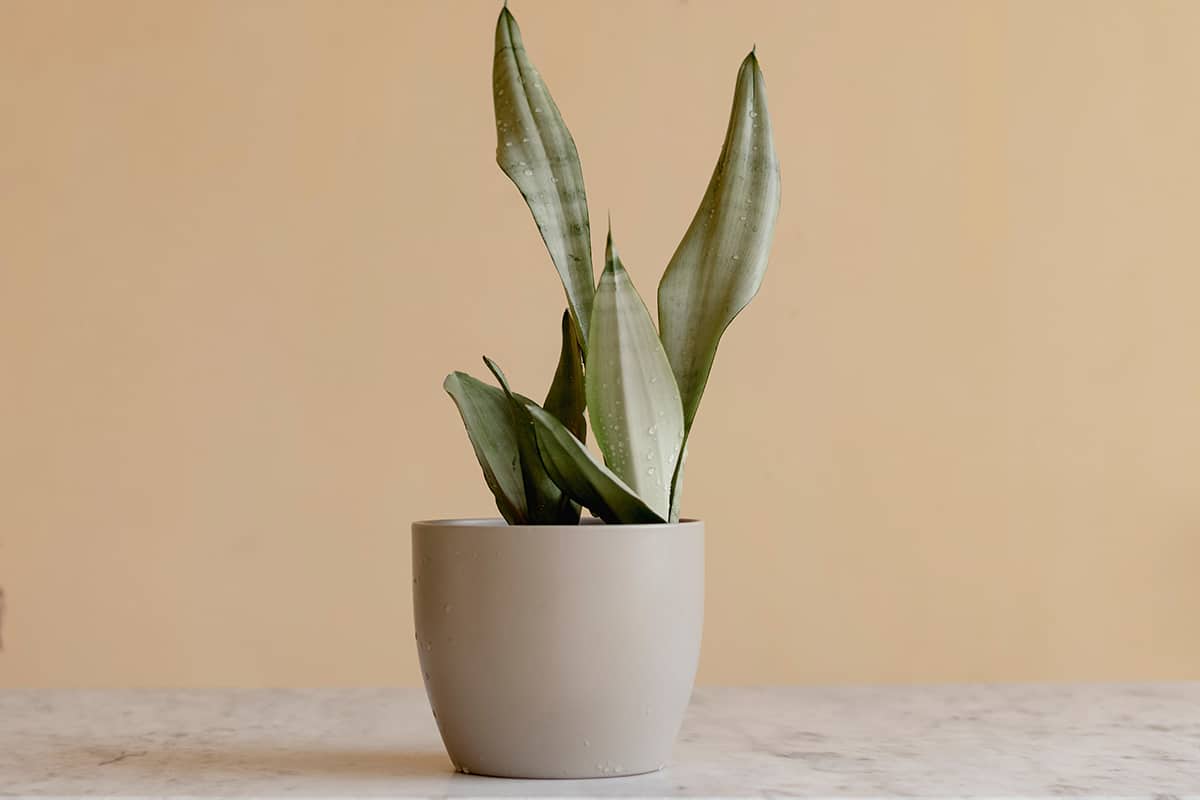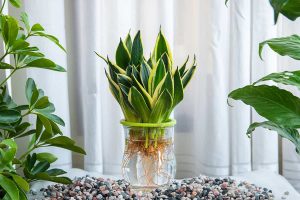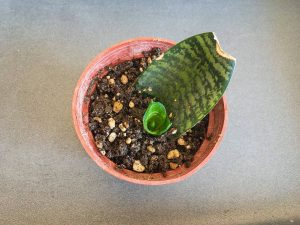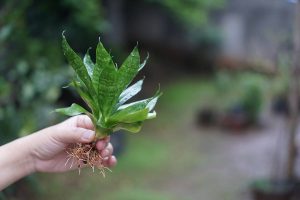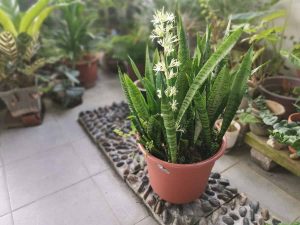The Moonshine Snake Plant is one of the most sought-after types of snake plants because of its pale coloring and almost ethereal look. This plant’s most prominent feature is its mint green-silver foliage which grows upright to heights of up to 2 feet. Like other snake plants, it is native to tropical West Africa, so it makes for a great house plant.
It is easy to grow, but it does benefit from some slightly different care than other varieties of snake plant. Read this guide to find out exactly how to care for your Snake Plant Moonshine.
| Botanical name | Sansevieria trifasciata Moonshine |
| Common names | Moonshine Snake Plant, Silver Moonshine, Moonlight snake plant, Moonlight Sansevieria |
| Plant family | Asparagaceae |
| USDA hardiness zone | 10 – 11 |
| Mature height | 2 feet |
| Mature spread | 1 foot |
Table of Contents
Varieties of Moonshine Snake Plant
The Moonshine Snake Plant is actually a cultivar of the common Sansevieria trifasciata. Other varieties of this popular snake plant include:
Sansevieria Trifasciata Futura Robusta
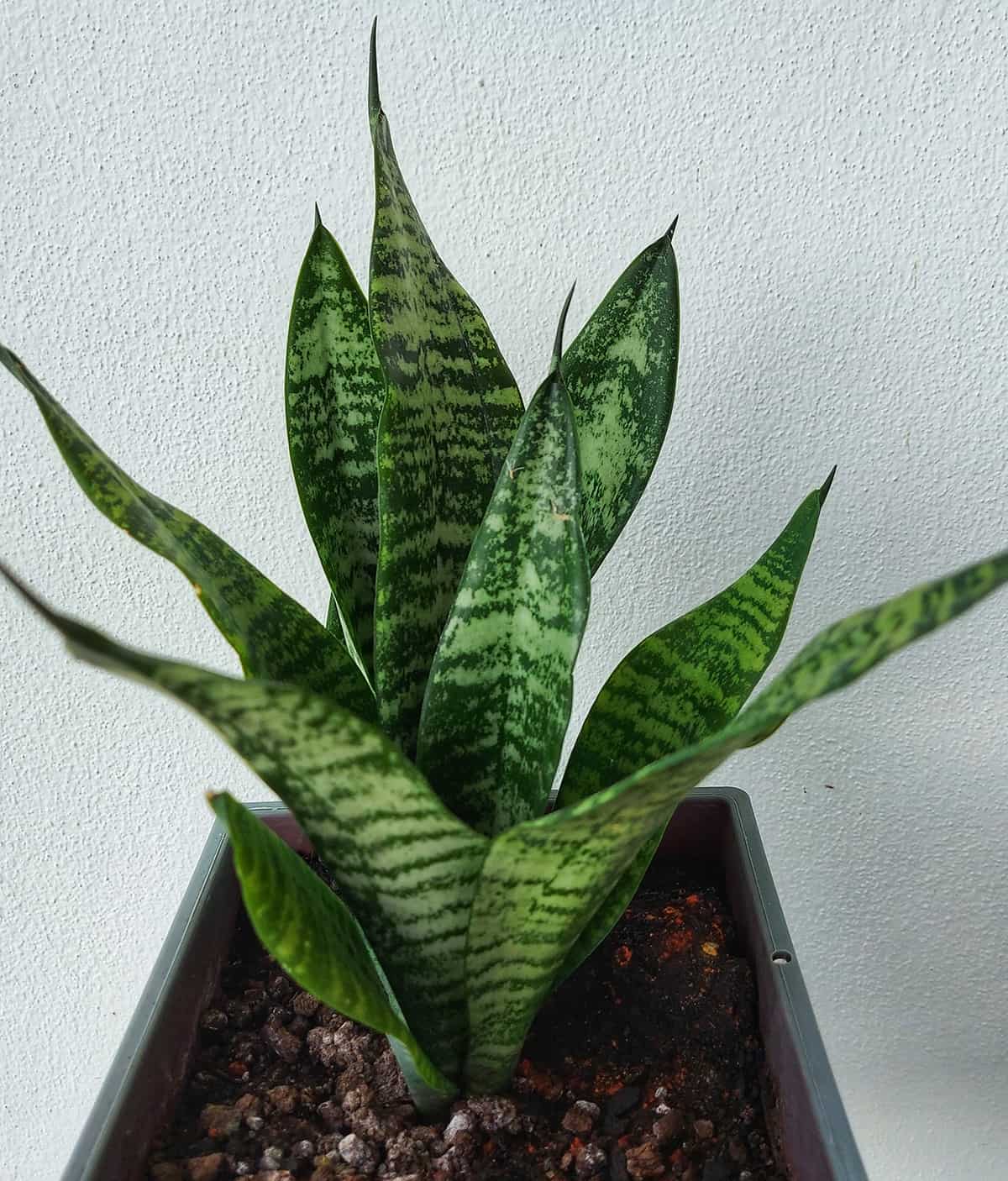
This variety of snake plants is very similar to the Moonshine Snake Plant in everything but its color. Both of these plants grow to heights of around 2 feet, with a spread of 12 inches. Their leaves are both thick and fleshy, tapering up to a gradual point. The Futura Robusta Snake Plant does not have pale green-silver leaves like the Moonshine Snake Plant.
Instead, it has dark green leaves with pale gray-green horizontal zigzag markings. You can help to keep the variegation prominent by ensuring the plant receives bright, indirect light.
Sansevieria Trifasciata Black Gold
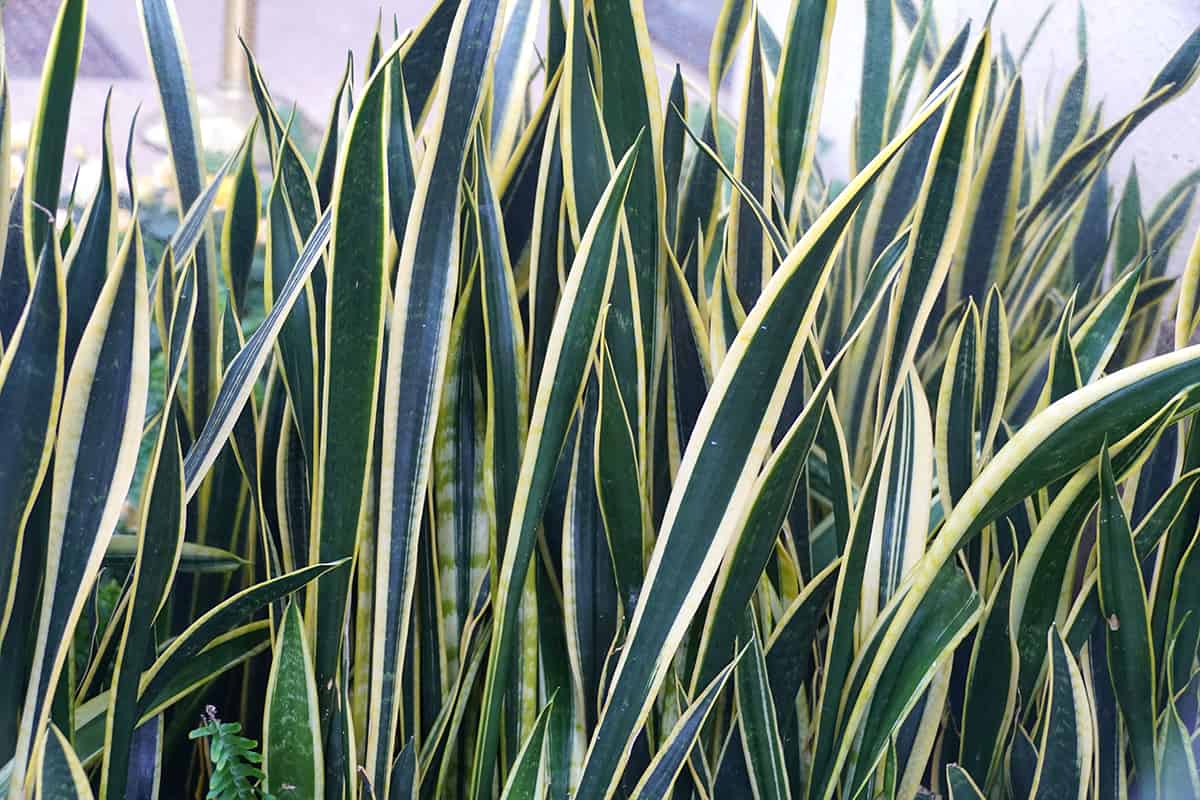
This snake plant variety is aptly named due to the coloring of its foliage. It has dark green leaves, which can appear almost black in low light, and bright yellow leaf margins that represent gold. Sansevieria Trifasciata Black Gold has taller, more slender leaves compared with the Moonshine Snake Plant.
How to Care for Your Snake Plant Moonshine
Snake plants are widely considered to be easy-care plants because they are adaptable to a wide variety of situations. They will survive in almost any light setting, can tolerate drought, are not fussy about humidity, and rarely need fertilizer.
However, surviving and thriving are two very different things. If you really want to help your Moonshine Snake Plant to be the best it can be, follow these care tips.
Light
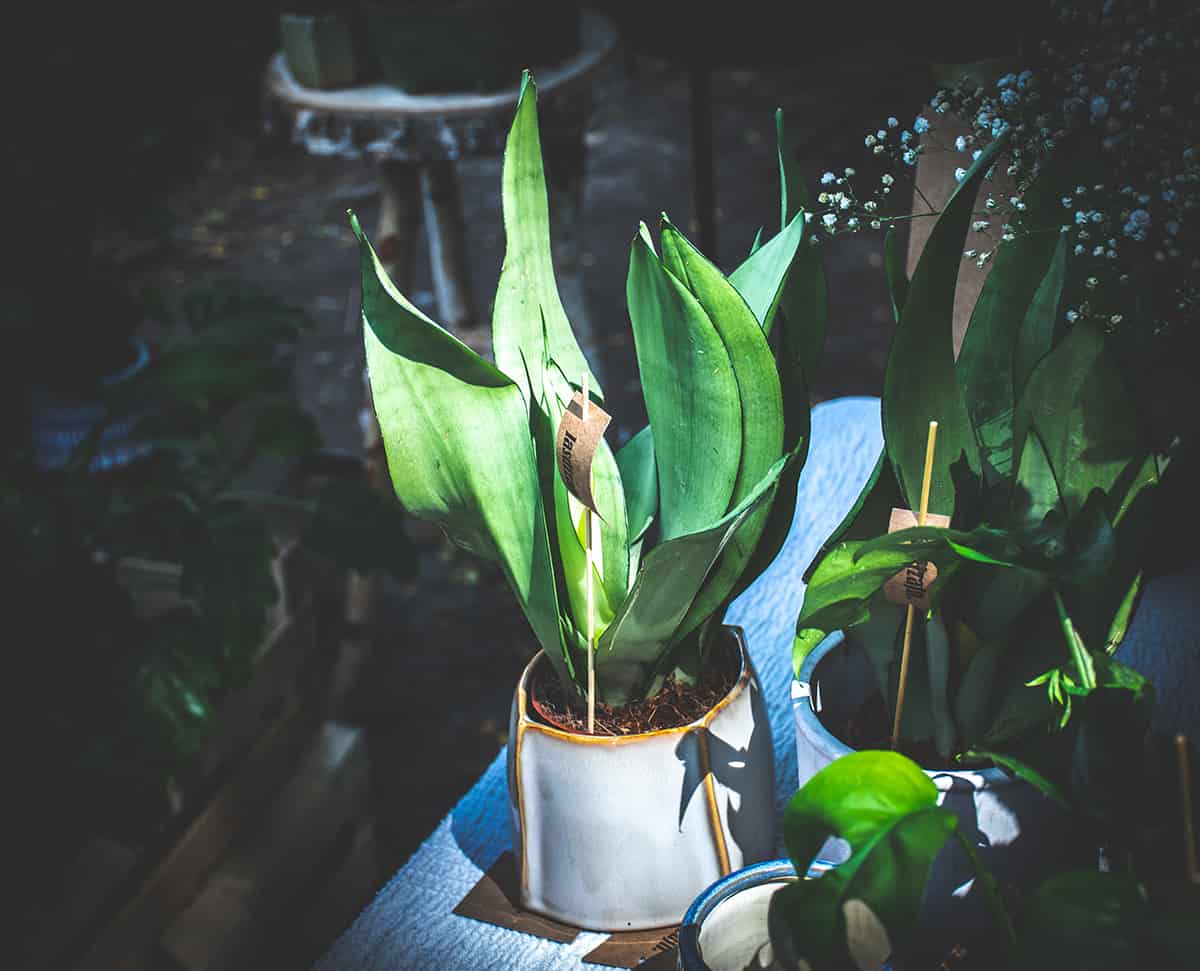
Light is a contentious issue among many snake plant owners. Most snake plants can survive in shade, full light, and anything in between, and because of this, some people consider them to be low-light plants. Many of the houseplants people commonly grow prefer bright indirect light, so when you find a plant that can tolerate shade, it’s quite exciting because it means you can decorate a dark corner of your room with some lush greenery.
However, there is a distinction between surviving and thriving. Though snake plants can survive in low light, this isn’t the type of light that is best for them. When kept in low light, the growth of a snake plant will slow. If you have a snake plant with variegated foliage you will likely also find that the colors become dull or less distinctive.
This is certainly the case for the Moonshine Snake Plant. If you position this plant in shade or low light, it won’t die, but the foliage color will be compromised. The best thing about this plant is its stunning pale mint-colored foliage, and when kept in low light the leaves will darken to a more ordinary shade of green.
The result will be a plant that looks more like a common snake plant variety rather than the more unusual Moonshine Snake Plant. If you want to maintain the striking colors of the foliage, the Moonshine Snake Plant needs to be kept in bright light. Bright, indirect light is best, but it can also tolerate direct light. Just be sure to move it to a fully lit spot gradually so as not to send the plant into shock or scorch the leaves.
Soil
The Moonshine Snake Plant needs to be grown in well-draining soil, just like other varieties of snake plants. This is essential to encourage water to drain away from the roots, helping to prevent the roots from being subjected to excess moisture.
Use a soil mix created specifically for succulents or cacti or a regular houseplant soil with perlite added in to improve drainage. The plant pot the Moonshine Snake Plant is growing in needs to have drainage holes in the base so that when water drains through the soil, it has somewhere to escape.
Water
Most snake plants don’t need a lot of water, and this is true of the Moonshine Snake Plant. As a succulent, this plant is drought tolerant in its native habitat, however, when kept as a houseplant, it won’t be able to send its roots out extensively to find sources of moisture beneath the ground. Houseplants are, of course, confined to their pots and the moisture contained within those pots.
This means that although the Moonshine Snake Plant can tolerate dry conditions for short periods, you shouldn’t leave it indefinitely without water because it will dehydrate and eventually die. However, the fastest way to kill a Moonshine Snake Plant is actually to overwater it. Though these plants don’t like to be left without water for extended periods, they also really don’t like to be kept in wet soil.
You’ll need to strike a balance between too much water and too little water, and though it sounds like this plant is quite fussy, it’s actually really easy to get the watering care of a snake plant right. Throughout the warmer months, the Moonshine Snake Plant will generally need to be watered roughly every week to every ten days, while in the cooler months, this can be cut back to once every 3 weeks to once a month.
Rather than relying on a schedule for watering your Moonshine Snake Plant, you should test the condition of the soil to see if it actually needs to be watered. This is a much more reliable method of watering than basing your watering on a timetable because changes in the temperature and light can alter how quickly your snake plant absorbs its moisture or how fast it evaporates from the soil. You can dip your finger into the soil until it is a few inches down to feel for moisture, or you can lift your plant up and insert a finger into the drainage hole. If the soil is dry to the touch, then the plant needs to be watered. If it feels moist, don’t water it and check it again in another few days. When watering the plant, use a generous amount of water to ensure that all of the soil is moistened, and then discard any excess that comes through the drainage holes.
Temperature
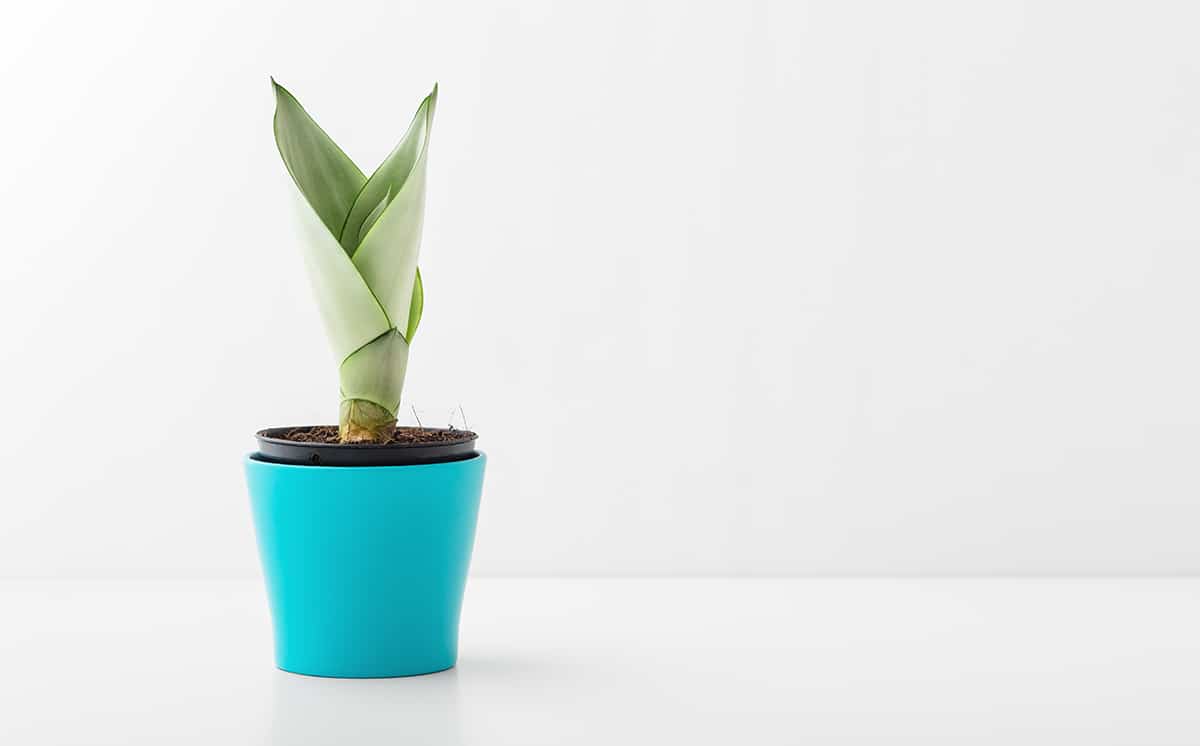
The Moonshine Snake Plant is native to West Africa, where it routinely experiences hot temperatures and is not subjected to frost. When growing a Moonshine Snake Plant, similar soughts of temperatures need to be mimicked.
Snake plants are happiest when kept in a temperature range of 65 to 85°F. Since average room temperature falls into this range, it means that Moonshine Snake Plants make for perfect houseplants. They can also be grown outside in warm climates, from USDA hardiness zones 10 to 11. They are able to withstand temperatures as low as 50°F, but this isn’t advisable for extended periods of time.
Fertilizer
Moonshine Snake Plants don’t need to be fertilized, making them a great low-maintenance plant ideal for people with busy schedules or those who forget to tend to their plants. If you want to fertilize your snake plant, you can do so, but make sure you use a diluted fertilizer or a fertilizer intended for succulents. This will help to ensure the plant doesn’t suffer from fertilizer burn.
Snake Plant Moonshine FAQs
Can a Snake Plant Moonshine lose its color?
Yes, unfortunately, the Moonshine Snake Plant can lose the beautiful pale foliage color that it is famed for. The leaves can turn to a dark shade of green so that it isn’t easy to distinguish the plant from any other type of snake plant. The good news is that this won’t happen for no reason. The foliage of this plant will only change color as a reaction to light exposure.
If you want to maintain the stunning mint green foliage color, you’ll need to ensure the plant gets plenty of light. If it is kept in the shade, this is when the leaves will turn to a darker green.
Can Snake Plant Moonshines regain their color?
After a snake plant’s foliage has turned to a dark green as a result of lack of light, it cannot revert to its former color. All you can do is move it to a better-lit spot so that future leaves will be pale green.
Are Snake Plant Moonshines toxic?
Yes, they contain saponins which are toxic to pets and humans. Keep them away from pets or children who are prone to exploring with their mouths.
